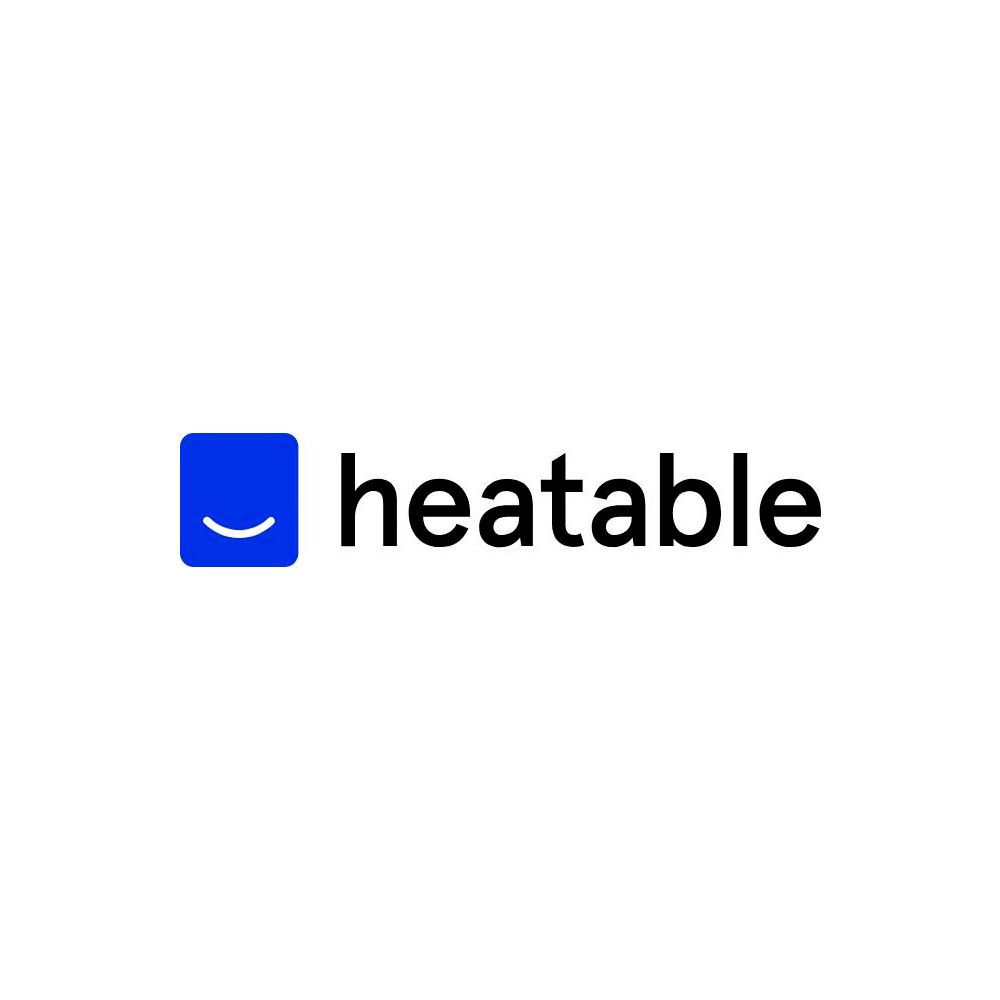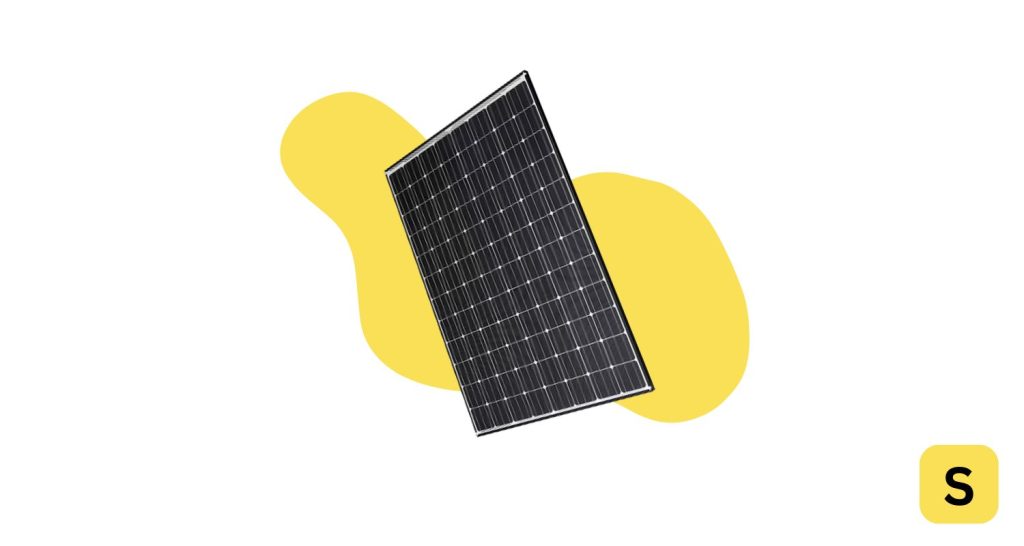Integrated solar panels (also called in-roof panels) are built directly into your roof structure, rather than sitting on top like traditional panels. They replace some of your roof tiles or slates, creating a flush, low-profile finish.
Because they’re part of the roof system itself, integrated panels are usually fitted during a new build or roof replacement project – not retrofitted. That’s why they’re often the go-to choice for homeowners doing major renovations or building from scratch.
Pro tip: Avoid vague bundles or hidden costs. Go with a provider offering transparent, fixed-price quotes – like Heatable, a Which?-approved installer with no sneaky extras.
How Do Integrated Solar Panels Work?
Functionally, they work just like any other PV panel:
- The photovoltaic (PV) cells absorb sunlight
- This creates electrical charges inside the panel
- An internal electric field channels those charges into usable electricity
The main difference? They double as roofing material. Instead of mounting racks and brackets, integrated panels sit directly on the roof, saving space and delivering a seamless finish.
And yes — they’re typically more efficient than solar tiles, with some offering up to 10–20% better performance.
PS You can watch our complete review of the best solar panels in the UK below:
Benefits of in-roof solar panels
Reduced energy costs and additional savings
The installation costs might be more than the regular solar panels; however, with in-roof solar panels, you can save a good amount of money on a monthly basis in many ways.
Cut Your Energy Bills with Solar in 90 Seconds
Get your free fixed-price quote from Heatable — a Tesla Premium Installer with no hidden fees or sales pressure.
- ✔ MCS-accredited & Which? Trusted Trader
- ✔ Fixed price guarantee — no surprise costs
- ✔ Finance available & deposit protection
- ✔ Rated 4.9★ by thousands of UK homeowners

Apart from the regular practice of consuming little to no electricity from the grid and saving up on bills, which of course is the basic role of a solar panel, you can actually use your extra generated electricity to earn money by selling the extra energy back to the grid.
You should dig in and find out if there are any tax incentives offered by your country for solar panels. Many governments provide homeowners with tax credits or refunds, which can help them save money while filing their taxes.
Environment-friendly alternative
Solar energy is one of the cleanest and greenest forms of electricity. You can meet your power needs completely with this eco-friendly alternative and avoid harmful repercussions like the emission of greenhouse gases.
In-roof solar panels have the capability to generate enough power so that you can switch completely from the grid to solar energy-generated electricity.
Low upkeep
In-roof solar panels take the existing low-maintenance nature of solar panels to the next level. You do not need to keep them cleaned every now and then.
There is also a lesser chance for birds to make nests or sit there because integrated solar panels are built into the roof and don’t have a mounting structure. They are as plain as a roof.
The elevated value of homes
People who are prospecting for residential properties to rent or buy prefer buildings that have solar panels built right in. In-roof solar panel installation is a plus point because it is quickly turning into a necessity for homes.
For homeowners who frequently experience power outages or have trouble connecting their homes to grids, integrated solar panels are the best option.
Tolerance to strong winds
Integrated solar panels are not placed or mounted on the rooftops, so there is a lower chance of wind affecting their position or causing any hindrance to the efficiency.
A flawless finish to roofs
Installing in-roof solar panels has the added benefit of being aesthetically pleasing. They have a smooth and sleek appearance to go with many different home designs.
Related solar guides:
- How many solar panels do you need?
- Smart Export Guarantee
- Can you install solar panels in a conservation area?
- Best 4kw solar system with battery storage
- Sunshine hours map UK
- Best Solar Panels
- Solar panel output calculator
Disadvantages of in-roof solar panels
Reduced efficiency
Although integrated solar panels are more visually appealing, they typically generate around 3% less energy than on-roof panels because they run at a higher temperature.
Integrated solar panels fit tightly inside a tray, which reduces the amount of air ventilation available to cool the solar panel itself.
Thus, more energy is lost to heat when running at a greater temperature. However, for many people, better aesthetics may outweigh the modest reduction in generation capacity.
Retrofitting
Although they are extremely hassle-free to maintain once installed but retrofitting in-roof solar panels into an existing roof is more difficult and labour-intensive.
Hence, people prefer installing the in-roof solar panels while their houses are in the construction phase.
Types of integrated solar panels
The most effective types of solar panels in the market are:
Monocrystalline solar panels
Because they are primarily composed of pure silicon, monocrystalline solar panel cells have higher levels of efficiency.

Because of their cylindrical shape, these cells are more efficient. Manufacturers of solar panels shape silicon ingots into wafers to create them.
The cell edges are rounded and smoothed during the procedure. You won’t need as many of them because their shape and composition increase the amount of electricity they produce. However, that level of effectiveness comes with a cost.
Compared to polycrystalline solar panels, monocrystalline cells are more expensive to produce.
They cost roughly 50 cents more per kilowatt than their polycrystalline counterparts as a result. But there are benefits to that expense, like their extended lifetime and longer warranties.
Polycrystalline solar panels
Solar panels that are polycrystalline are made from many silicon crystals as opposed to only one, hence the name.
After being melted down, the silicon shards are put into moulds. The manufacturing process for the panels uses less waste, which keeps the price of the panels low.
However, the panels’ efficiency is lower than that of monocrystalline solar panels. They can’t perform as effectively in hot areas and can’t produce as much electricity from the sun.
Polycrystalline solar panels are therefore thought to perform less well in warm climates than monocrystalline panels.
However, polycrystalline solar panels are common because of their low cost. They typically cost £1/W as opposed to monocrystalline solar panels’ £1.50/W.
Recommended reading:
Thin-film solar panels
Thin Film semiconductors are produced by rolling out different semiconductor materials like Silicon, cadmium telluride, and copper indium gallium selenide as a film on a surface.
They are mainly popular because of how they are manufactured. The disadvantage of thin-film solar panels is that they need a lot of roof space and are typically less efficient than crystalline solar panels.
Additionally, they tend to deteriorate more quickly, providing shorter warranties. The upside of thin-film solar panels is that they are more adaptable.
Like crystalline solar cells, thin-film solar cells are also less expensive and more flexible. They can be turned into shingles.
Thin film panels are a fantastic alternative for folks who dislike the way solar panels look on roofs.
Unlike conventional panels, which have fixed cell counts, thin film panels can be made in a variety of sizes to meet varied requirements.
How much do in-roof solar panels cost?
Depending on the size of your roof, installing solar panels can cost anywhere between £2,900 to £9,000.
The cost of a typical 250W solar panel will range from £400 to £500, depending on the system you choose to install.
A 4kW solar panel system is a typical demand for a household, which costs about £6,400 and will cover about 29 square meters of your roof.
| Solar System Size/Type: | Average Costs: |
|---|---|
| 3kW PV system | £5,000 |
| 4kW PV system | £6,000 |
| 5kW PV system | £8,000 |
| Solar thermal system (3.6m2) | £4,000 – £5,000 |
In-roof solar systems are not substantially more expensive than conventional ones, but because many integrated solar panels are custom-made, it might be challenging to determine an exact cost.
The following are some parameters that can alter the price:
- The number of panels you install.
- Whether you’re incorporating them into new construction or a retrofit.
- The amount of electricity the panels need to produce.
- The vendor you select.
The financial benefit from the power generated
Although the initial cost of installing solar panels may seem excessive, these may typically pay for themselves in a few years. With solar panels, you can cut costs in two different ways.
You can save between £90 and £240 annually on electricity expenses with a 4kWp solar panel. In a few years, the installation cost will be offset by these savings.
You can export any excess solar energy that you produce but do not utilise back to the main grid. You can make between 1p and 5.5p per kWh, depending on the supplier.
Other popular articles from the Solar Advice blog:
